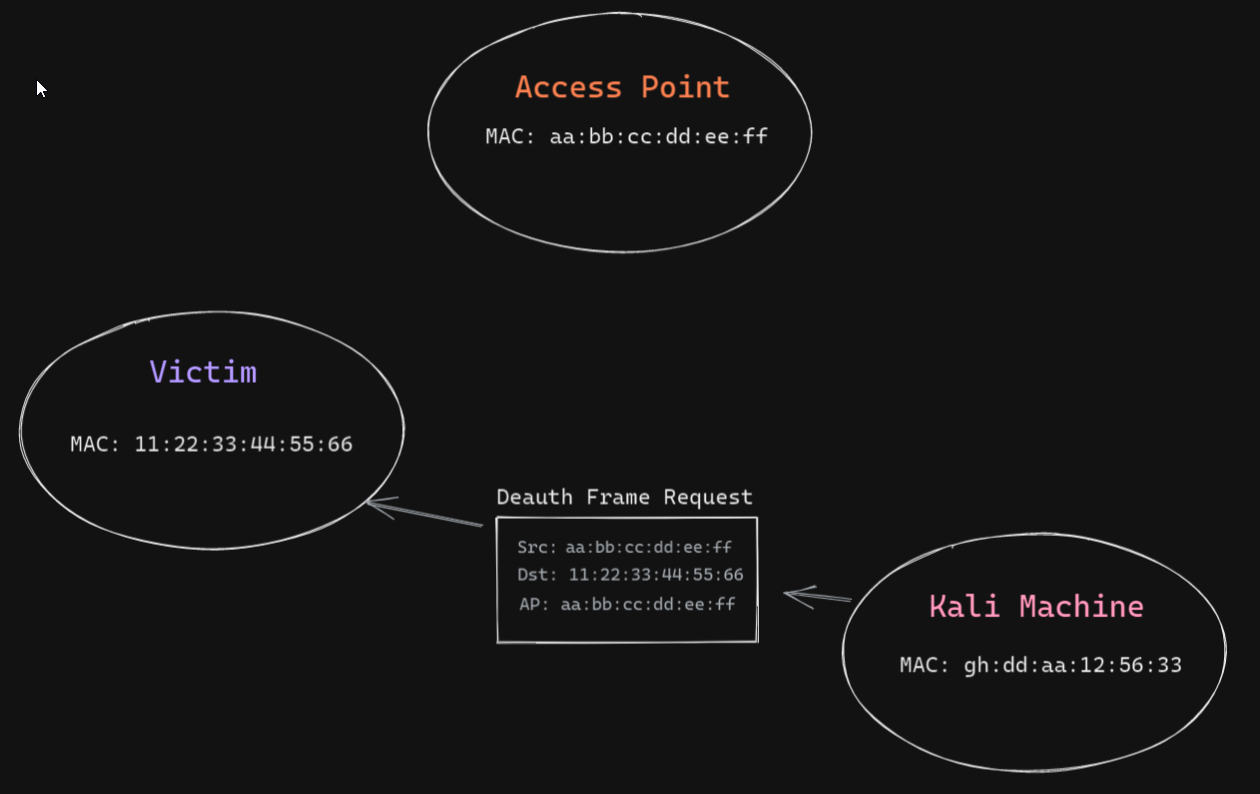


It is conceivable a case where the cartridge into the mobile phone and the power supply is difficult to be found, which with computers and concealment than the antenna go much higher. Prior to the experiment, we used a useful tool Aircrack-ng wireless network security, the ability of this tool is obviously more powerful than the node we use today but also to achieve the same functionality, but NodeMCU portability and concealment more strong direct connection of the phone or mobile power supply:
#Deauth 5ghz Offline#
Out only after all clients are offline for an attacker it does not make sense, but this attack can be combined with fishing Wi-Fi application, blocking around your available network name such as "CMCC" or "ChinaNet "forged node, steal phone numbers, passwords or codes via fake nodes and other information. In addition we summarize the attacks and hardware used in this experiment some of the features and warning: Some devices will have an effect directly off the network, some equipment is briefly disconnected. Therefore, when testing will find different devices on the network card's ability to withstand such attacks is not the same under the same network, the same way the impact of different router is not the same. We use is Deauth attack.īaidu ping the target host after their attack, you can see the request timeout, returned to normal after the close attack.Īfter the attack, the client will try to connect AP again, but because the attacker continued to attack so they will be disconnected.

Click to select a different attack "START" to start the attack. After a successful connection to open the browser to "192.168.4.1".Ģ) Click on "I`VE READ AND UNDERSTOOD THE NOTICE ABOVE" can be seen after AP scanning interface.ģ) Search network attacks, and select the network you want to attack.Ĥ) click on the top of the "Stations" can scan devices in the network, attacks on a particular device.ĥ) Click the above "Attacks", can be seen at the Selected Station Station When not selected display FF: FF: FF: FF: FF: FF-BROADCAST i.e. Fourth, the attack test:ġ) After the device is powered using a mobile phone or computer connected to the node sends Wi-Fi network "pwned".
#Deauth 5ghz install#
In the development board manager download NodeMCU esp8266 supporting the use of the kit and install version 2.0.0.Īfter changing the connection port provided in the code and flash information good development boards and the like, with Arduino IDE programming code into the development board. Third, the downloading steps:Īfter installing the Arduino compiler needs to be relevant settings.
#Deauth 5ghz drivers#
In BadUSB safety experiments we used the Arduino IDE programming, it also can support NodeMCU, only need to add drivers to support it.Įxperiment hardware device to download the source code from Stefan Kremser open source projects on Github of. It is an open source Internet of Things platform, using the Lua scripting language. The experimental apparatus used is an integrated development board NodeMCU ESP8266 chip.
#Deauth 5ghz verification#
When the client attempts to re-establish the attacker with the AP continues to send cancellation identity verification when connecting to the channel frame, which will lead to the client and the AP has never been able to reconnect. The figure is a schematic diagram of their attacks:Ĭan be visually seen through this FIG., The attacker sends a fake authentication cancellation message to the entire network, thereby blocking the connection between the user and a legitimate AP. It is designed to end the unicast address to verify identity canceled by frame from the AP to deceive customers into client is not associated / non-certified status. Today it is a destructive re-introduce stronger, more covert attack - cancel verification flood attacks.įirst, look at what is canceled verification flood attack: called De-authenticationFlood Attack on international, called the flooding cancel authentication or validation block flood attacks, commonly referred to as Deauth attack, the wireless network is a denial of service attack form.

Before we did the experiment hijacking Wi-Fi positioning, in fact, related to Wi-Fi attacks, there are many, but most of them need equipment and operation are simple.


 0 kommentar(er)
0 kommentar(er)
